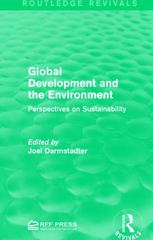Question
John Kay argues that the key measure of [business] success is added valuethe difference between the (comprehensively accounted) value of a firm's output and the
John Kay argues that "the key measure of [business] success is added valuethe difference between the (comprehensively accounted) value of a firm's output and the (comprehensively accounted) cost of its inputs." Recall that Kay's definition of added value is synonymous with the concept of economic profit (and also what von Mises termed entrepreneurial profit). Based on Kay's definition of added value, explain why Maital's "two major sins linked to hidden costs" must necessarily be part of the "comprehensively accounted" costs related to Kay's added value calculation. Use the anecdotes and examples provided by Maital to anchor your exposition. Hints: Why can Ricardian rent, Added Value, and economic profit be thought of as synonymous terms. What is their common economic attribute? Why do Kay and Maital argue that these measures offer the most appropriate way to measure business success? What is the entrepreneurial function in economics? How do the arguments made by Maital harmonize with your answer? (Food for thought: How does your answer relate to Schumpeter's definition of entrepreneurship as "the carrying out of new combinations"?) What does Maital mean when he warns managers not to ignore "hidden costs when they are real"? What is one good example he offers to illustrate this point? What does Maital mean when he warns managers not to treat "costs as if they were real . . . when in fact they are zero"? What is one good example he offers to illustrate this point? With regard to the previous two bullet-points, what does Maital mean when he argues that "it is up to managers to create incentives that help others choose well"? How does your answer to the above bullet-point relate to the interrelationship of (1) the Hayekian knowledge problem, (2) the entrepreneurial function in economics, and (3) the process of wealth creation?
Step by Step Solution
There are 3 Steps involved in it
Step: 1

Get Instant Access to Expert-Tailored Solutions
See step-by-step solutions with expert insights and AI powered tools for academic success
Step: 2

Step: 3

Ace Your Homework with AI
Get the answers you need in no time with our AI-driven, step-by-step assistance
Get Started


